- Review Articles
- Infection
- Changes in age-specific seroprevalence of Japanese encephalitis virus and impact of Japanese encephalitis vaccine in Korea
- Byung Ok Kwak, Young Jin Hong, Dong Hyun Kim
- Clin Exp Pediatr. 2022;65(3):108-114. Published online September 24, 2021
-

Since the introduction of a universal Japanese encephalitis (JE) vaccination program and urbanization, the incidence of JE has dramatically decreased in Korea. However, recent JE cases have occurred, predominantly among unvaccinated adults and with a shift in age distribution. Continuous surveillance of the seroprevalence of JE is required to establish a proper immunization policy in Korea.
- Neonatology (Perinatology)
- Retinopathy of prematurity: a review of epidemiology and current treatment strategies
- Eun Hee Hong, Yong Un Shin, Heeyoon Cho
- Clin Exp Pediatr. 2022;65(3):115-126. Published online October 12, 2021
-
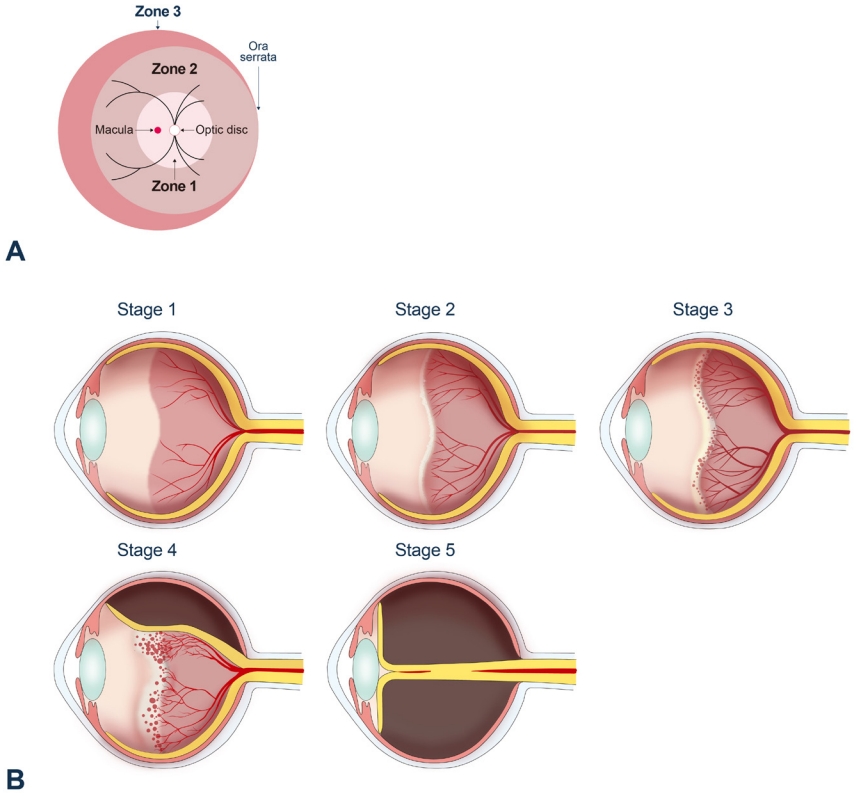
There have been global tri-phasic epidemic periods of retinopathy of prematurity (ROP). In recent years, its incidence has reportedly been 10%–40% depending on country and study population. Current treatment strategies for ROP include laser photocoagulation, surgical treatment, and anti-vascular endothelial growth factor treatment, the role of which has drawn attention in recent years.
- Editorials
- Infection
- Importance of maintaining a high childhood vaccination rate and surveillance program against Japanese encephalitis in Korea
- Su Eun Park
- Clin Exp Pediatr. 2022;65(3):127-128. Published online February 16, 2022
-
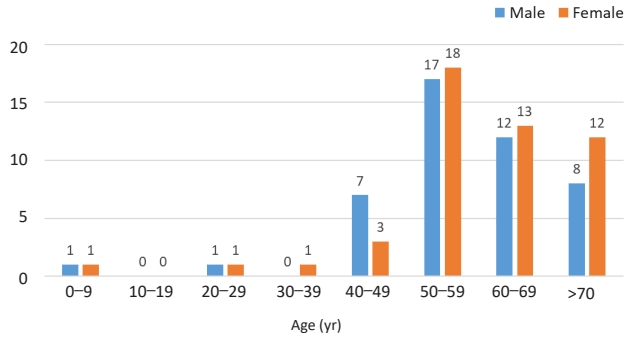
∙ Recent epidemiologic changes of Japanese encephalitis (JE) in Korea are area (rural to urban or suburban) and age shift (children to adult).
∙ Although the main factors contributing to recent epidemiologic changes of JE are not well identified, maintaining high vaccination rates of JE appear to be important in preventing of JE in all age groups.
∙ Continuous surveillance for epidemiology and seroprevalence should be carried out.
- Endocrinology
- Clinical and diagnostic importance of dyslipidemia in children and adolescents during the coronavirus disease 2019 pandemic
- Eun Young Kim
- Clin Exp Pediatr. 2022;65(3):129-130. Published online January 14, 2022
-
∙ Because childhood lipid concentrations continue into adulthood, early evaluation and treatment are needed, but dyslipidemia awareness is low.
∙ For the prevention and treatment of dyslipidemia in childhood and adolescence, a major risk factor for cardiovascular disease in adulthood, lifestyle modifications, appropriate exercise, and drug treatment are required.
∙ A large-scale study of the prevalence and therapeutic effects of dyslipidemia in children and adolescents in Korea is needed.
- Original Articles
- Neonatology (Perinatology)
- Is fetal nuchal cord associated with autism spectrum disorder? A meta-analysis
- Ensiyeh Jenabi, Maryam Ahmadi, Azam Maleki
- Clin Exp Pediatr. 2022;65(3):131-135. Published online September 24, 2021
-
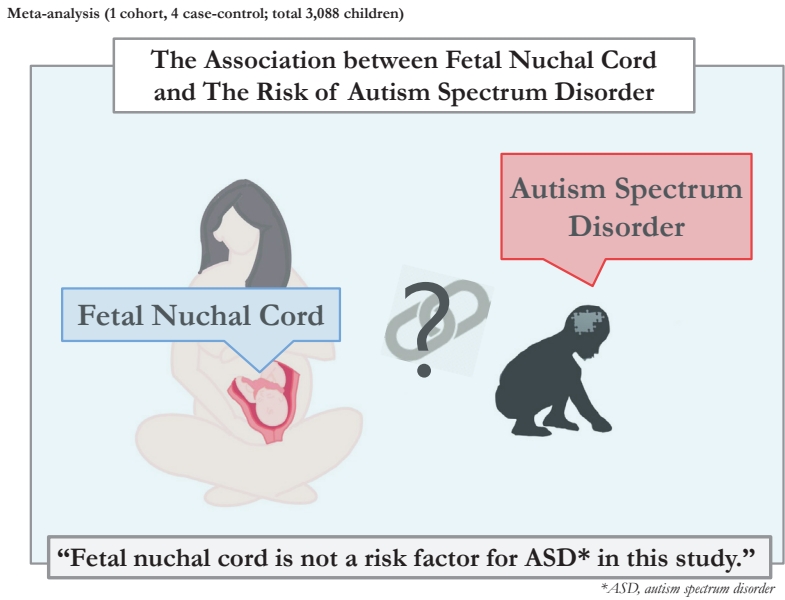
Question: Is fetal nuchal cord a risk factor for autism spectrum disorder (ASD)?
Finding: Five articles (1 cohort, 4 case-control; total 3,088 children) were included in the present meta-analysis. Fetal nuchal cord was not a risk factor for ASD (odds ratio, 1.11; 95% confidence interval, 0.66–1.57). There was homogeneity among studies that reported a risk of ASD (I2=0.0).
Meaning: Fetal nuchal cord is not a risk factor for ASD.
- Pulmonology
- Modified high-flow nasal cannula for children with respiratory distress
- Sarocha Itdhiamornkulchai, Aroonwan Preutthipan, Jarin Vaewpanich, Nattachai Anantasit
- Clin Exp Pediatr. 2022;65(3):136-141. Published online May 24, 2021
-
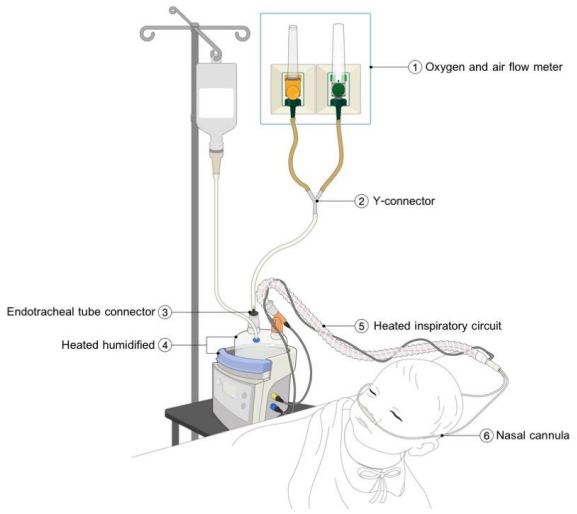
Question: Can the modified high-flow nasal cannula (HFNC) provide alternative respiratory support for children with acute respiratory distress?
Finding: A total of 74 patients were assigned to the modified or commercial HFNC groups. The intubation rate, length of hospital stay, and adverse events did not differ between the 2 groups.
Meaning: The modified HFNC can provide alternative respiratory support for pediatric respiratory distress.
- General Pediatrics
- Gross motor dysfunction and balance impairments in children and adolescents with Down syndrome: a systematic review
- Preyal D. Jain, Akshatha Nayak, Shreekanth D. Karnad, Kaiorisa N. Doctor
- Clin Exp Pediatr. 2022;65(3):142-149. Published online June 11, 2021
-
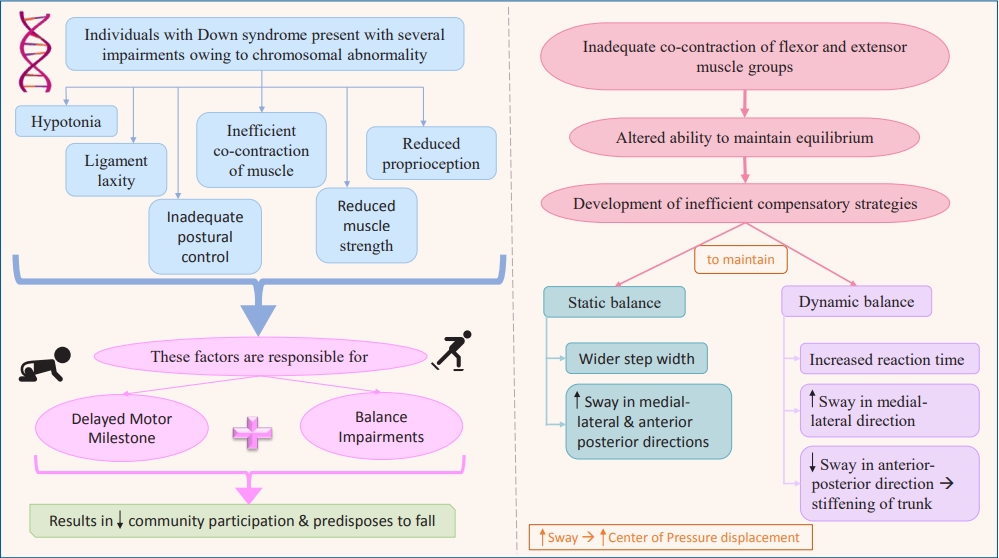
Question: What are the primary motor and balance dysfunctions in children with Down syndrome?
Finding: These individuals have gross delays, altered balance, and inefficient compensatory mechanisms.
Meaning: Neuromuscular and musculoskeletal impairments due to the chromosomal abnormality lead to developmental delay. These children also exhibit poor balance with greater instability and inefficient compensatory mechanisms including altered center of pressure displacement and trunk stiffening that predisposes them to falls.
- Letter to the Editor
- Oncology
- Retrospective review of severe acute respiratory syndrome coronavirus-2 infection in children with acute leukemia from a tertiary care hospital in Northern India
- Suhail Chhabra, Aditya Dabas, Richa Mittal, Neha Goel, Ritabrata Roy Chowdhary, Satyendra Batra, Amitabh Singh, Rani Gera
- Clin Exp Pediatr. 2022;65(3):150-151. Published online November 26, 2021
-
- Correspondence and Replys
- Neurobehavior
- Association between polycystic ovary syndrome and risk of attention-deficit/hyperactivity disorder in offspring: a meta-analysis
- Hadith Rastad, Mahnaz Seifi Alan
- Clin Exp Pediatr. 2022;65(3):152-152. Published online February 17, 2022
-
- Association between polycystic ovary syndrome and risk of attention-deficit/hyperactivity disorder in offspring: a meta-analysis
- Ensiyeh Jenabi
- Clin Exp Pediatr. 2022;65(3):152-152. Published online February 17, 2022
-












